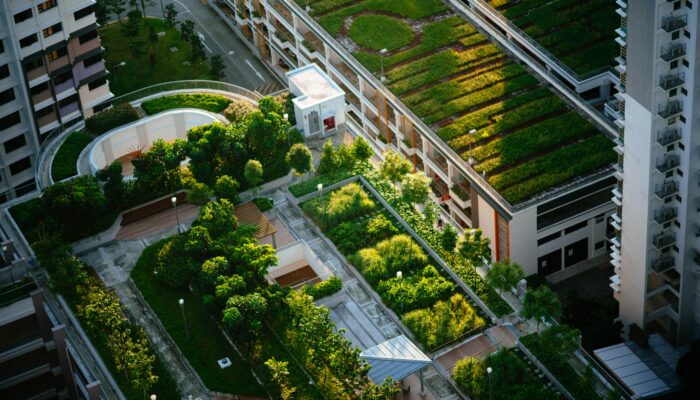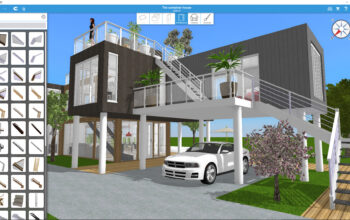Uzone.id – As cities get bigger and busier, they’re dealing with huge challenges. Things like climate change, using up too much stuff, and not everyone having the same chances are just a few of the problems.
To build cities that can last, architects, planners, and people who make decisions need to change the way we think about designing and building them.
Addressing Climate Change
One of the most critical aspects of sustainable city design is addressing climate change. Cities are major contributors to greenhouse gas emissions, and the impacts of climate change, such as rising sea levels, extreme weather events, and heat waves, are already being felt in many urban areas. Sustainable city design must prioritize energy efficiency, renewable energy, and green infrastructure to mitigate these effects.
For example, cities can invest in public transportation systems, bike lanes, and pedestrian-friendly infrastructure to reduce reliance on cars and decrease transportation-related emissions. Additionally, implementing green roofs, solar panels, and energy-efficient buildings can help to reduce energy consumption and greenhouse gas emissions.

Green Infrastructure: Implementing green roofs, urban forests, and bioswales can help mitigate stormwater runoff, improve air quality, and create cooler microclimates.
Renewable Energy: Investing in solar, wind, and geothermal energy sources can reduce reliance on fossil fuels and decrease carbon emissions.
Energy Efficiency: Promoting energy-efficient buildings, transportation systems, and appliances can significantly reduce energy consumption and associated emissions.
Climate Adaptation: Planning for climate change impacts, such as sea-level rise, can help protect critical infrastructure and ensure the long-term sustainability of cities.
Promoting Social Equity
Sustainable city design must also address social equity. Cities must be inclusive and accessible to all residents, regardless of their socioeconomic status. This means ensuring that everyone has access to affordable housing, quality education, healthcare, and transportation.
“Cities must be diverse, must be full of contrasts and surprises, must be full of life,” argued urban theorist Jane Jacobs.
To promote social equity, cities can implement policies that support affordable housing development, invest in public schools, and improve access to healthcare services. Additionally, cities can create inclusive public spaces that encourage interaction and community building.
- Affordable Housing: Implementing policies that support affordable housing development can help address housing affordability issues and reduce homelessness.
- Inclusive Transportation: Investing in public transportation, bike lanes, and pedestrian-friendly infrastructure can improve accessibility for all residents, regardless of their income or mobility.
- Community Engagement: Fostering community engagement and participation can help ensure that the needs and priorities of all residents are considered in city planning and development.
- Diverse Land Use: Promoting mixed-use development can create vibrant neighborhoods that support a variety of activities and attract a diverse population.
Fostering Economic Development
Sustainable city design requires a focus on economic development. Cities must create jobs and opportunities for their residents while also promoting sustainable economic growth. This can be achieved by fostering innovation, entrepreneurship, and local businesses.
Cities can support economic development by creating business incubators, providing access to financing, and investing in infrastructure that attracts businesses. Additionally, cities can promote sustainable tourism by highlighting their cultural heritage, natural beauty, and sustainable practices.

Prioritizing Resident Well-being: Creating Healthy and Happy Communities
Sustainable cities must prioritize the well-being of their residents. This includes creating healthy environments, promoting active lifestyles, and fostering a sense of community.
- Green Spaces: Developing parks, community gardens, and green spaces can provide opportunities for recreation, exercise, and social interaction.
- Active Transportation: Encouraging active transportation through bike lanes, pedestrian-friendly streets, and public transportation can improve health and reduce traffic congestion.
- Community Building: Supporting community events, festivals, and organizations can foster a sense of belonging and connection among residents.
- Public Health Initiatives: Implementing public health initiatives can address health disparities and improve the overall well-being of residents.
“Architecture is about space, and space is about life,” stated architect Frank Gehry.
The future of cities depends on our ability to design and build sustainable urban environments. By addressing climate change, social equity, economic development, and the well-being of residents, we can create cities that are resilient, equitable, and prosperous. And by designing cities with life in mind, we can create a sustainable future for generations to come.
















